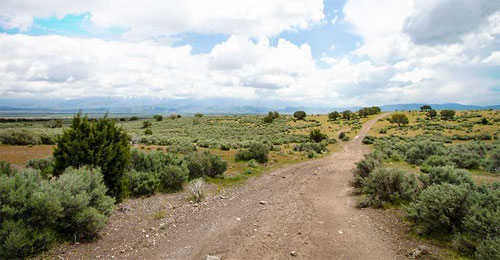Brice Wallace
Butchering a well-known phrase, if you certify it, they will come.
And they will build on it.
That’s the point of the Economic Development Corporation of Utah’s Mega Sites program, started a few years ago to help the organization recruit large economic development projects to Utah. The state has a sprinkling of wide-open spaces offering attributes attractive to companies considering the state for expansion — all during a time when such spaces are relatively scarce nationwide and large projects are in vogue.
{mprestriction ids="1,3"}“There are these large projects, larger than we’ve seen before [and] industrial-focused, and there’s a lack of inventory or product around the country,” Elvon Farrell, community strategist for EDCUtah, said at a webinar titled “Shovel-Ready is the New Incentive,” presented by ULI (Urban Land Institute) Utah.
“Luckily, we’re not quite as back on our heels, because we’ve had this program in the pipeline and it’s been ramping up. … This helps Utah maintain that competitive edge that has made our economy what it is.”
The Utah Mega Sites program, administered by EDCUtah on behalf of the state, came about following a 2016 discussion about boosting the number of large-project wins in the state. A Mega Site goes through a certification process to ensure that it offers at least 400 acres, an 80 percent contiguous buildable area, relatively flat topography, existing infrastructure at or near the site, completed engineering and other studies, and other elements that make it appealing for a large project.
Utah currently has 11 Mega Sites with a combined 28,000-plus acres. A similar program, dubbed the Certified Site program, also is in place for projects needing anywhere from 50 to 400 acres. Both are under EDCUtah’s Site Ready program and are designed to shorten development timelines and reduce client risk.
“This is why we’re doing it, is to minimize the risk, the timeline, the cost that really makes this an incentive to a company or a site selector as they’re looking at these sites,” Farrell said. “All of these things are in order to focus on answering the questions from companies and site selectors.”
EDCUtah also works to ensure the project matches the community and not just the site, he said. “In rural Utah, you’re not going to be able to land a thousand jobs, but you might be able to land a large data center that has fewer well-paid jobs but still has the large footprint need,” Farrell said.
“Landing or winning these projects, for instance, the Facebook data center at Eagle Mountain, that wasn’t a mega site, but the impact that it has had on the community, the amount of capital investment, the amount of growth that is taking place there, is unprecedented, and we need to look for more of these sites that can have that impact on the community.”
The program came about after Utah lost some lost some large industrial projects to other states. They included a 2,000-job Volkswagen project that ended up in Tennessee, a 650-job project for SeverStal in Mississippi, 500-job projects for Toray Industries in South Carolina and for Mitsubishi in Georgia, and a 220-job project for Teijin in South Carolina.
“We get concerned when we see projects like this that are large and impactful that are not even considering Utah and don’t even come across our desks,” Farrell said.
“We knew we weren’t even getting the first phone call,” said Stephanie Frohman, senior vice president of strategy and partnerships at EDCUtah. “We were seeing projects land in other states that we’d never even heard of because Utah had been eliminated from consideration before they even put out an RFI (request for information) because they didn’t think we had anything in that range.”
But that has changed. In fiscal 2021, the number of projects considering Mega Sites quadrupled, and the first half of fiscal 2022 saw a tripling of the number.
“So, we’re seeing a ramp-up of interest in these, and adding more sites increases interest not only in the communities that have those sites but Utah as a whole and making it a more-feasible state to land a project,” Farrell said.
“We’re excited to get more product ready because at the moment we’re getting requests of all kinds in manufacturing, and there’s not a lot available nationwide,” Frohman said.
Before COVID hit, EDCUtah’s pipeline featured about 30 percent to 40 percent manufacturing projects, but that has grown to 50 percent to 60 percent.
“We don’t see that slowing down anytime soon,” Frohman said. “That’s a function of companies trying to de-risk their supply chain after all the disruption of the past couple of years.”
Not only are more projects focused on manufacturing but they’re also larger.
“We are seeing projects in a scale that would make our eyes pop if they came in once or twice a year,” she said. “Now maybe [it’s] once or twice a month. A lot of big-footprint projects are looking at multiple states in the U.S. right now.”
For example, several companies are making huge investments in projects to produce electric vehicles, she said. Incentive programs and sites ready for development can position a state ahead of competitors to land such projects.
“There’s a lot happening in this space,” Frohman said, “and it just really shows that having ready product and speed-to-market is increasingly critical if we want to take down these big deals.”
Details about the program are at www.sitereadyutah.org.
{/mprestriction}







